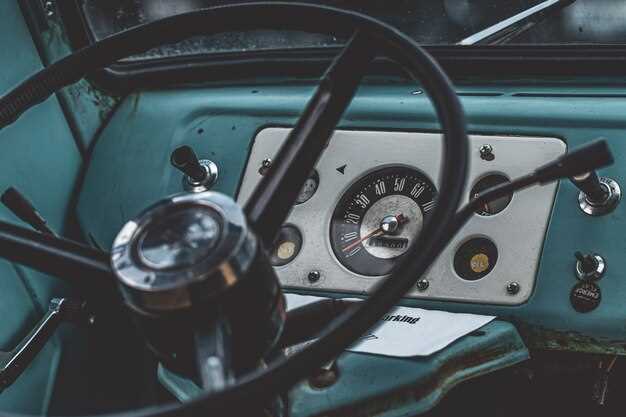
Classic roadsters are revered for their timeless style and driving experience, allowing enthusiasts to indulge in nostalgia while cruising down scenic routes. However, as technology advances, the need for modern navigation features becomes increasingly important for the ultimate driving experience. By integrating contemporary navigation solutions into your classic vehicle, you can enhance both functionality and convenience without compromising the car’s vintage charm.
In this article, we will explore various options to seamlessly incorporate navigation systems into your classic roadster. From smartphone integrations to dedicated GPS units, we will discuss the pros and cons of each method, ensuring that you can make informed decisions suited to your vehicle’s unique character. Whether you want to upgrade your driving experience for weekend getaways or daily commutes, the right navigation features can turn heads and make your classic roadster even more enjoyable to drive.
Additionally, we’ll delve into practical tips for installation and customization, helping you maintain the aesthetic appeal of your beloved roadster while adding essential modern technology. Embrace the blend of tradition and innovation as we guide you through the journey of enriching your classic driving experience with effective navigation features.
Choosing the Right GPS System for Vintage Vehicles

When selecting a GPS system for a vintage vehicle, several key factors should be considered to ensure a seamless integration of modern technology with classic aesthetics.
Display Size and Type
Opt for a GPS with a display that is not only visible in various lighting conditions but also complements the dashboard of the classic roadster. Look for options with high-resolution screens that avoid overwhelming the vintage look of the interior.
Ease of Use
Choose a device with an intuitive interface and straightforward navigation menus. Many vintage car enthusiasts prefer touchscreens that are responsive yet simple, allowing for quick and accurate input of destinations without distractions while driving.
Mounting Options
Consider how the GPS will be mounted within the vehicle. Magnetic mounts or suction-cup options can avoid permanent modifications to the dashboard. Alternatively, systems designed specifically for vintage models might offer custom brackets that fit seamlessly into the existing layout.
Battery Life and Power Supply
A reliable battery life is crucial for road trips. Look for GPS systems that allow for direct connection to the car’s electrical system to prevent interruptions during long drives. Ensure that the wiring is discreet to maintain the vehicle’s aesthetic appeal.
Maps and Updates
Select a GPS that offers real-time updates and maps with detailed information on classic routes and scenic drives. Additionally, check if the system provides offline map capabilities, as some vintage cars may not always have access to data networks.
Voice Guidance
Voice navigation is an essential feature that allows drivers to keep their eyes on the road. Opt for a GPS system that provides clear and concise vocal prompts without being overly intrusive.
Connectivity Features
While many classic car enthusiasts appreciate minimalism, certain connectivity features can enhance drive quality. Bluetooth capabilities for phone connectivity and hands-free operation can add convenience without cluttering the interior.
Durability and Weather Resistance
Given that vintage vehicles may be used in various weather conditions, consider GPS systems that are durable and weather-resistant. This will ensure longevity and reliability during adventurous drives.
In conclusion, choosing the right GPS system for a vintage vehicle involves balancing modern functionality with the classic car’s integrity. Evaluating display options, usability, mounting solutions, and key features will help enhance the driving experience while preserving the vehicle’s charm.
Integrating Navigation with Period-Correct Aesthetics

Integrating modern navigation technology into classic roadsters presents a unique challenge: maintaining the timeless elegance and authenticity of the vehicle while incorporating necessary functionalities. Achieving this balance requires careful selection of components that align with the aesthetic of the original design.
1. Period-Correct Displays
When choosing navigation displays, opt for screens that mimic the style of vintage car dials or gauges. Some manufacturers offer retro-futuristic displays styled to blend seamlessly with classic interiors. Resembling analogue instruments, these units can deliver modern functionality without compromising the vehicle’s character.
2. Discreet Mounting Solutions
Install navigation systems in a way that minimizes visual disruption. Consider using flush-mounted touch screens or integrating devices into existing dashboard elements without altering their original layout. This approach preserves the classic look while providing easy access to navigation features.
3. Vintage-Inspired Interfaces
Select navigation software that provides customizable interfaces designed to reflect the aesthetics of the era. Options with classic fonts, color schemes, and map designs can enhance the user experience while remaining congruent with the vehicle’s theme.
4. Authentic Materials
Utilize materials that match the classic roadster’s interior. Wood, leather, and metal accents can be incorporated around navigation systems to create a cohesive look. For instance, a wooden bezel can encase modern digital displays, making them appear as part of the original dashboard.
5. Audio Integration
To fully enhance the driving experience, incorporate audio navigation cues that blend seamlessly with the vehicle’s original sound system. Custom solutions can utilize vintage-style radios that include hidden modern components to maintain the period aesthetic while allowing for Bluetooth connectivity and navigation instructions.
In conclusion, successfully integrating navigation features into a classic roadster hinges on the ability to blend modern technology with period-correct aesthetics. Careful attention to detail, materials, and design choices ensures that classic cars remain true to their roots while benefiting from modern advancements.
Setting Up Touchscreen Solutions in Limited Space
Integrating a touchscreen system into a classic roadster requires thoughtful planning, especially when space is at a premium. The selection of the right size and type of touchscreen is crucial. Aim for a screen size that balances visibility and usability without overwhelming the dashboard. A 7 to 10-inch display is often ideal for compact areas, providing enough real estate for navigation maps and controls while fitting seamlessly into existing panels.
Consider utilizing mounting options that maximize the available space. A flush mount or tilt mount can help position the touchscreen at an optimal angle for both driver and passenger. This not only enhances visibility but also maintains the sleek aesthetic of the vehicle. Moreover, some touchscreens are designed to be integrated with the vehicle’s dashboard, allowing for a more factory-like appearance.
Cabling and connectivity pose additional challenges. Manage cables neatly to avoid clutter. Use cable management solutions like clips or conduit to route wires cleanly behind the panels. Opt for wireless functionality whenever possible to minimize the number of connections and reduce installation complexity. Bluetooth or Wi-Fi integration can simplify the setup and enhance user experience by enabling features like hands-free calling and wireless audio streaming.
Customization is another key aspect of fitting a touchscreen in a limited space. Choose a system that offers flexible software options, allowing you to tailor layout and functionality according to your needs. Many touchscreen systems support various applications, from GPS navigation to vehicle diagnostics, providing a diverse range of features without compromising space.
Lastly, ensure that the touchscreen solution you select is user-friendly and intuitive. A complex interface can lead to distractions while driving. Look for solutions that offer customizable shortcuts and large, easily accessible icons, thus enhancing usability within the confines of your classic roadster.













